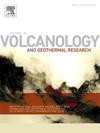Magmatic differentiation and plumbing system beneath Nyamulagira volcano (Virunga Volcanic Province, East African Rift)
IF 2.4
3区 地球科学
Q2 GEOSCIENCES, MULTIDISCIPLINARY
Journal of Volcanology and Geothermal Research
Pub Date : 2025-02-01
DOI:10.1016/j.jvolgeores.2024.108264
引用次数: 0
Abstract
Nyamulagira volcano (eastern Democratic Republic of the Congo) is one of Africa's most active volcanoes and poses a significant threat to the nearby rapidly expanding population centers. Situated in the Virunga Volcanic Province in the western branch of the East African Rift System, Nyamulagira's frequent eruptions offer a valuable opportunity to study effusive rift volcanism. However, understanding its subsurface processes remains challenging, impeding monitoring efforts.
Here, we report a comprehensive mineralogical, petrological, and geochemical study of rocks from historical eruptions at Nyamulagira. Mineral textures and compositions show strong spatial and temporal variations. We identify multiple active magma reservoirs in which magma compositions and textures evolve via crystal accumulation, fractional crystallization, magma recharge, mixing, and convection.
We distinguish three distinct reservoirs: a deep reservoir at ∼ 22–30 km depth, the main storage region at ∼ 13–18 km depth, and a shallow reservoir at ∼ 2–9 km depth. We propose that differentiation at Nyamulagira integrates olivine and clinopyroxene crystallization and accumulation in the deep reservoir, and fractional crystallization and magma mixing/homogenization in the interconnected intermediate and shallow reservoirs. Primitive magmas from the deep reservoir are predominantly emitted via distal eruptions, whereas more evolved magmas from the shallower reservoirs have been erupted on the flanks or at the summit caldera in recent decades.
东非裂谷维龙加火山省尼亚穆拉吉拉火山岩浆分异与管道系统
尼亚穆拉吉拉火山(刚果民主共和国东部)是非洲最活跃的火山之一,对附近迅速扩张的人口中心构成了重大威胁。位于东非裂谷系西部分支的维龙加火山省,尼亚穆拉吉拉火山的频繁喷发为研究热流裂谷火山作用提供了宝贵的机会。然而,了解其地下过程仍然具有挑战性,阻碍了监测工作。在这里,我们报告了一个全面的矿物学,岩石学和地球化学研究岩石从历史喷发在尼亚穆拉吉拉。矿物结构和组成具有明显的时空差异。我们发现了多个活跃的岩浆储层,其中的岩浆成分和结构通过结晶聚集、分离结晶、岩浆补给、混合和对流而演化。我们区分了三个不同的储层:深度为~ 22-30 km的深层储层,深度为~ 13-18 km的主要储层,以及深度为~ 2-9 km的浅层储层。我们认为,Nyamulagira的分异整合了深部储层中橄榄石和斜辉石的结晶和聚集,以及相互连接的中浅层储层中的分异结晶和岩浆混合/均匀化。深层储层的原始岩浆主要通过远端喷发而喷发,而近几十年来,来自较浅储层的更进化的岩浆在侧面或顶部破火山口喷发。
本文章由计算机程序翻译,如有差异,请以英文原文为准。
求助全文
约1分钟内获得全文
求助全文
来源期刊
CiteScore
5.90
自引率
13.80%
发文量
183
审稿时长
19.7 weeks
期刊介绍:
An international research journal with focus on volcanic and geothermal processes and their impact on the environment and society.
Submission of papers covering the following aspects of volcanology and geothermal research are encouraged:
(1) Geological aspects of volcanic systems: volcano stratigraphy, structure and tectonic influence; eruptive history; evolution of volcanic landforms; eruption style and progress; dispersal patterns of lava and ash; analysis of real-time eruption observations.
(2) Geochemical and petrological aspects of volcanic rocks: magma genesis and evolution; crystallization; volatile compositions, solubility, and degassing; volcanic petrography and textural analysis.
(3) Hydrology, geochemistry and measurement of volcanic and hydrothermal fluids: volcanic gas emissions; fumaroles and springs; crater lakes; hydrothermal mineralization.
(4) Geophysical aspects of volcanic systems: physical properties of volcanic rocks and magmas; heat flow studies; volcano seismology, geodesy and remote sensing.
(5) Computational modeling and experimental simulation of magmatic and hydrothermal processes: eruption dynamics; magma transport and storage; plume dynamics and ash dispersal; lava flow dynamics; hydrothermal fluid flow; thermodynamics of aqueous fluids and melts.
(6) Volcano hazard and risk research: hazard zonation methodology, development of forecasting tools; assessment techniques for vulnerability and impact.

 求助内容:
求助内容: 应助结果提醒方式:
应助结果提醒方式:


